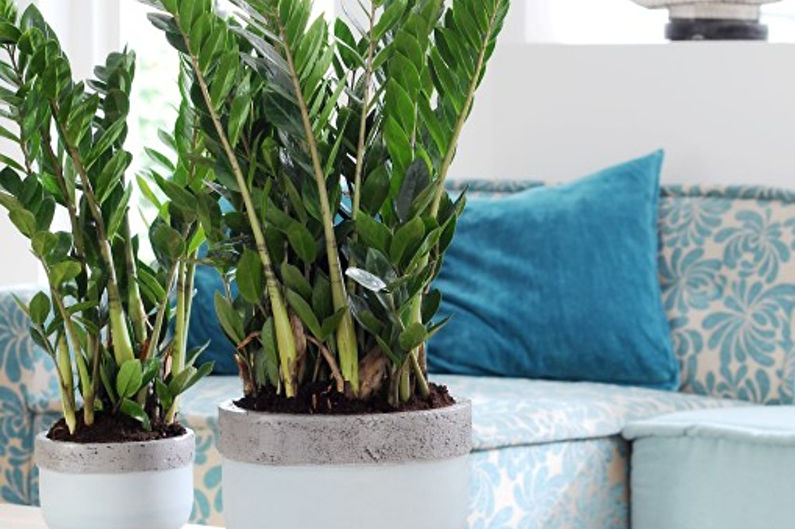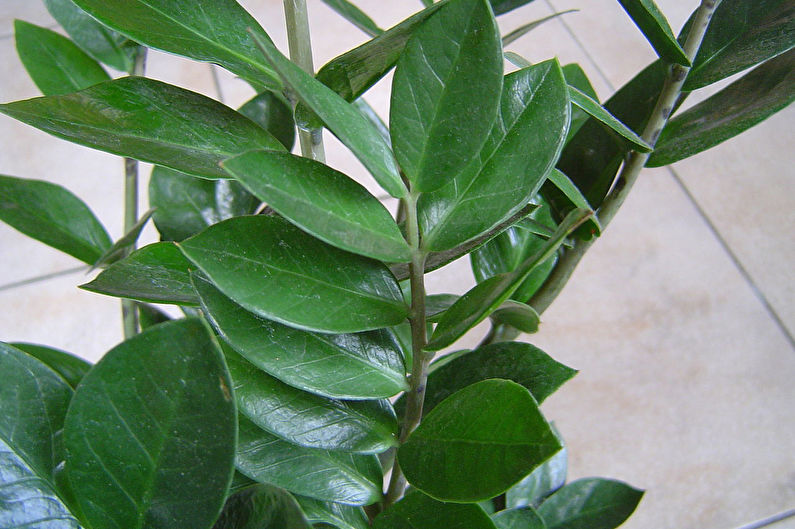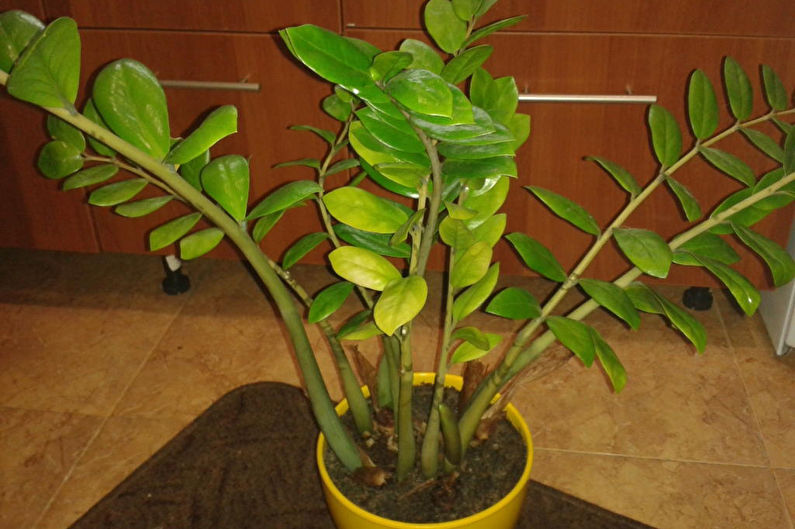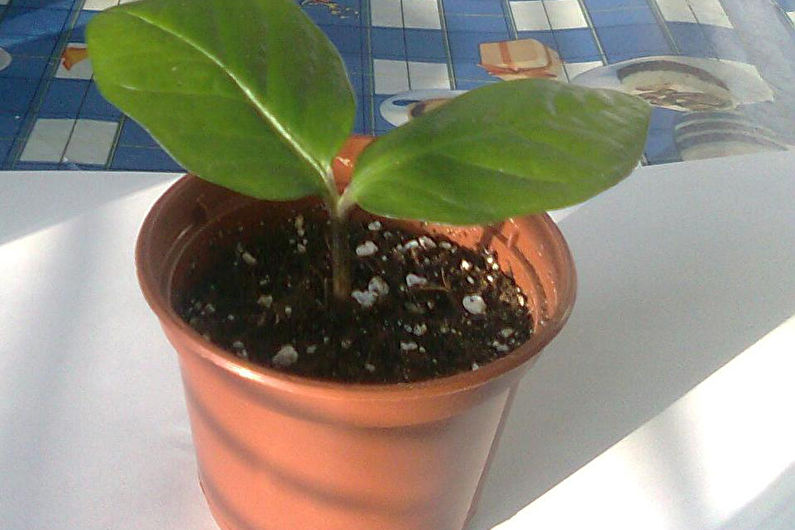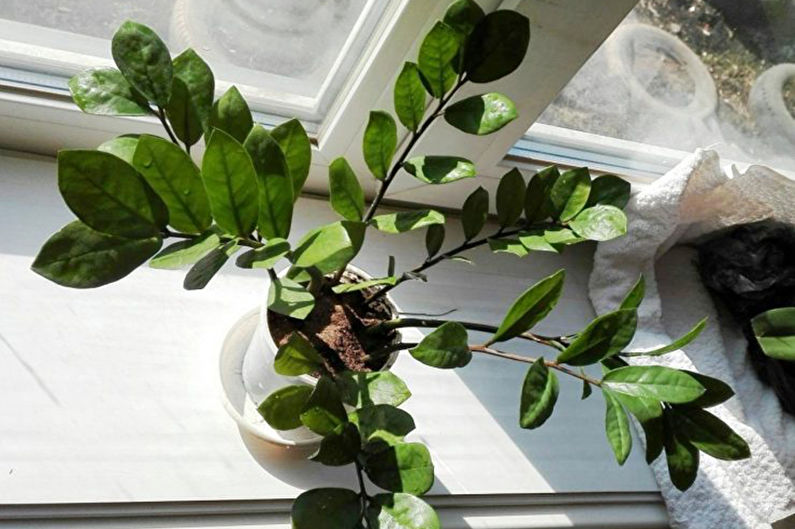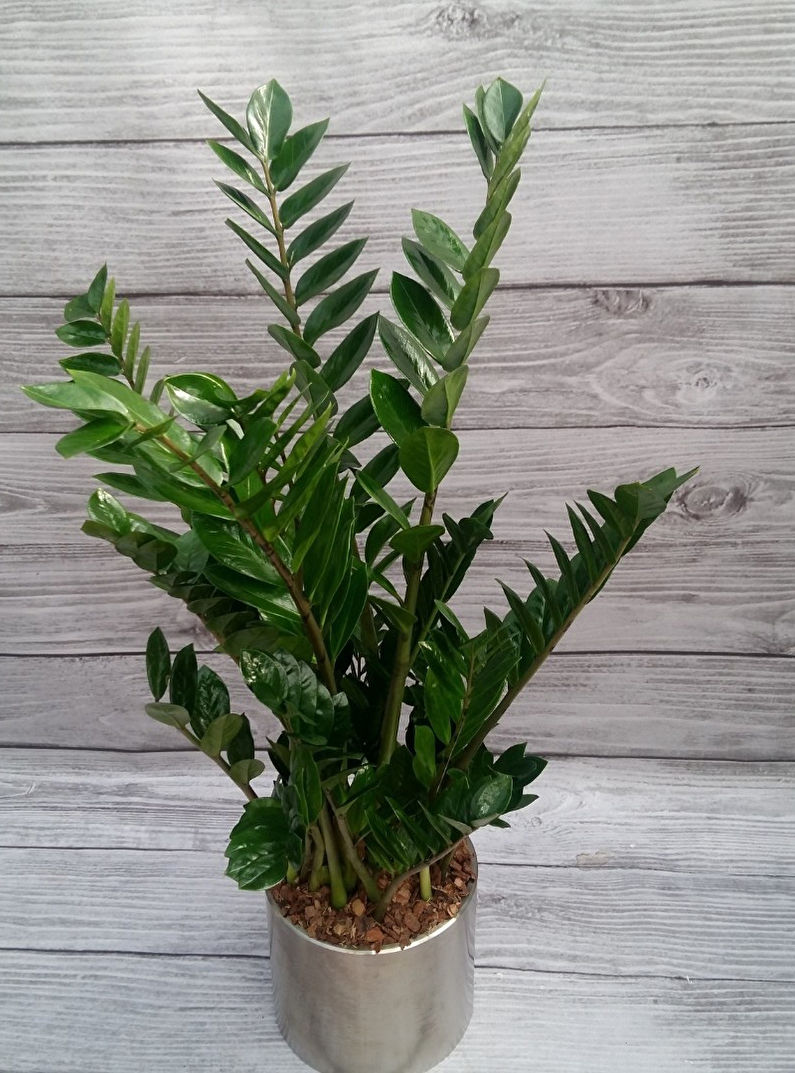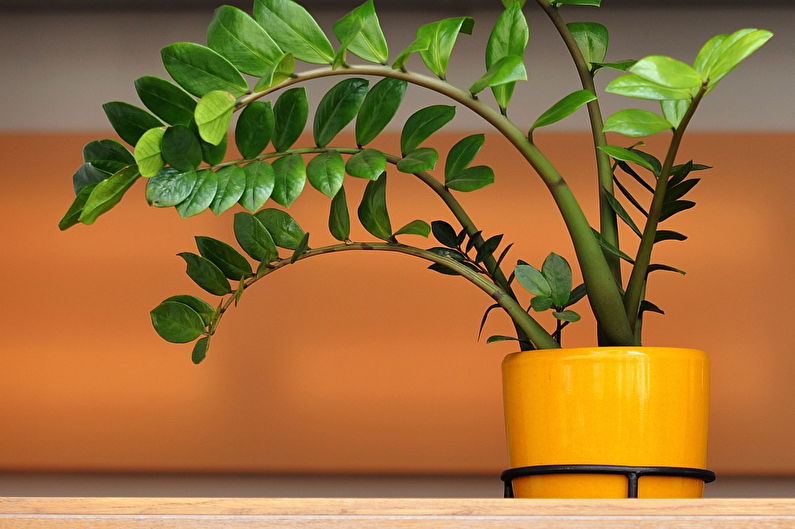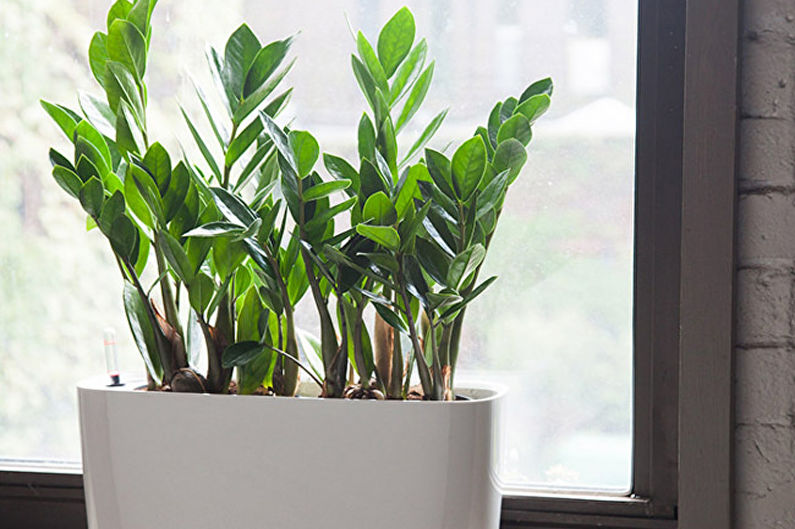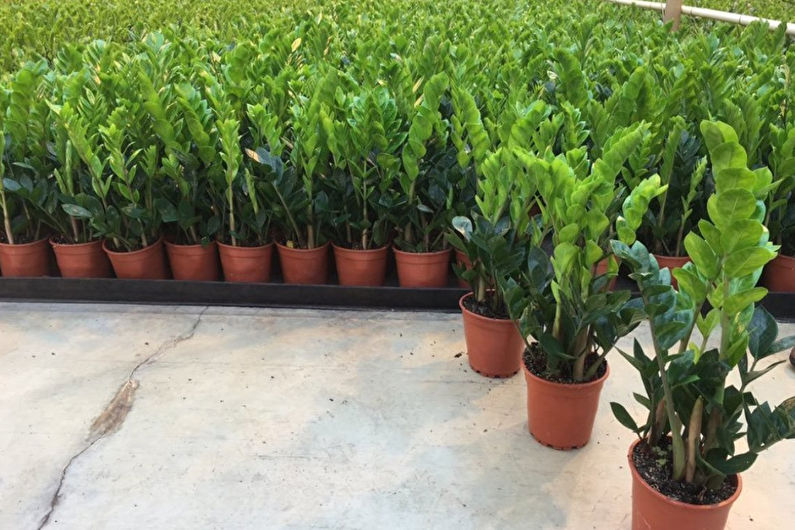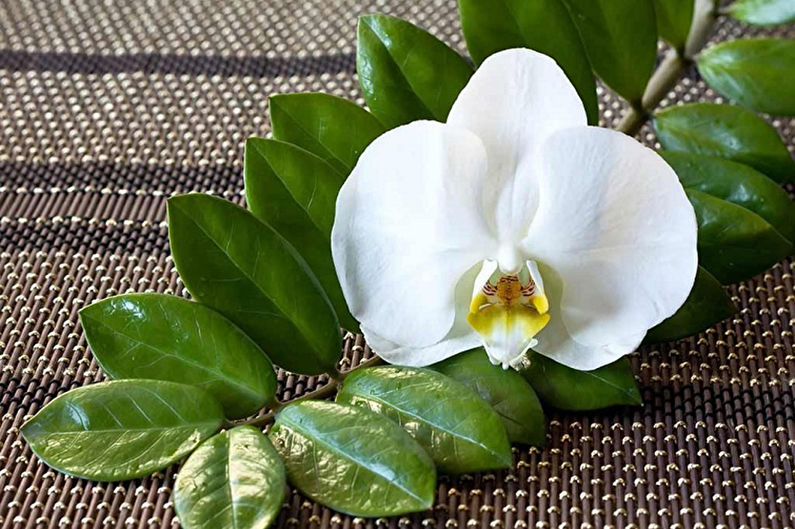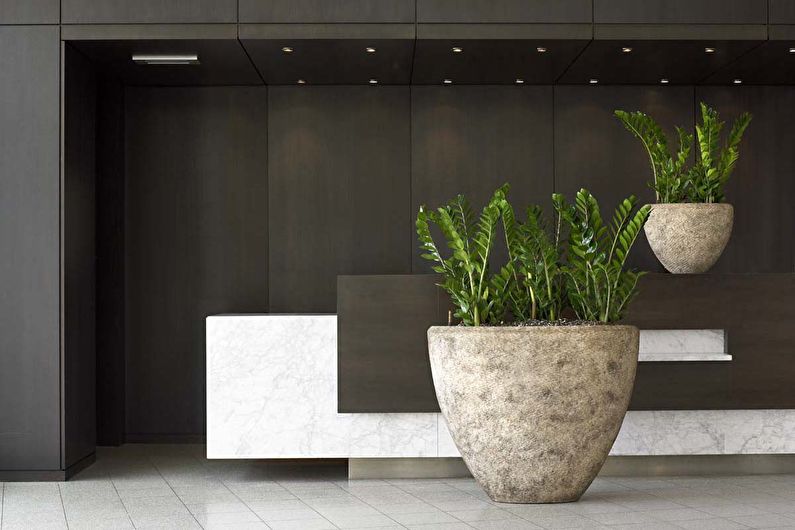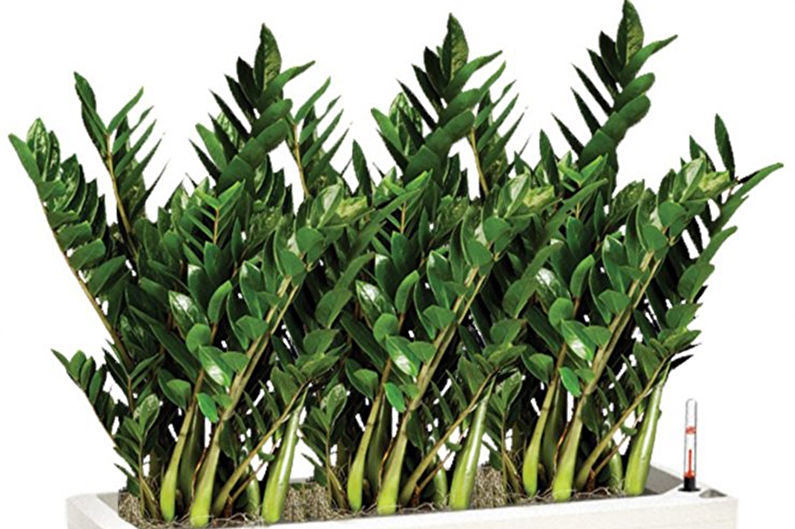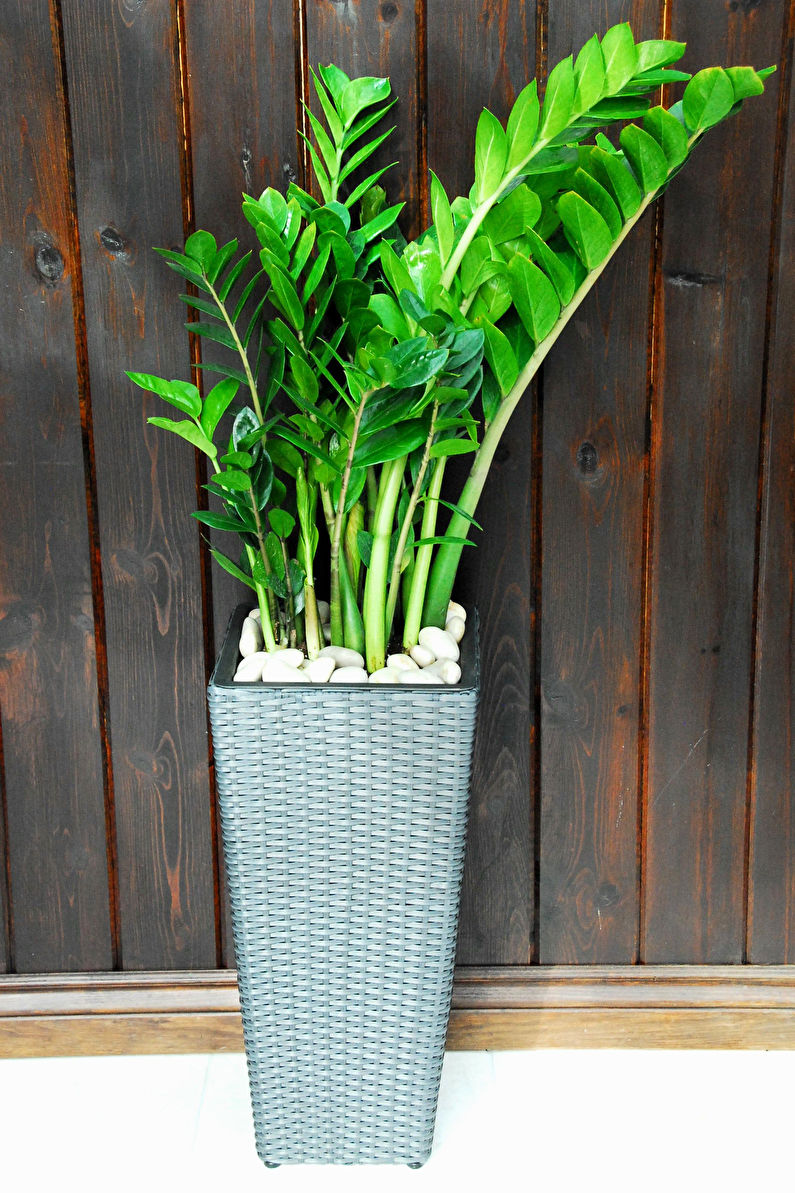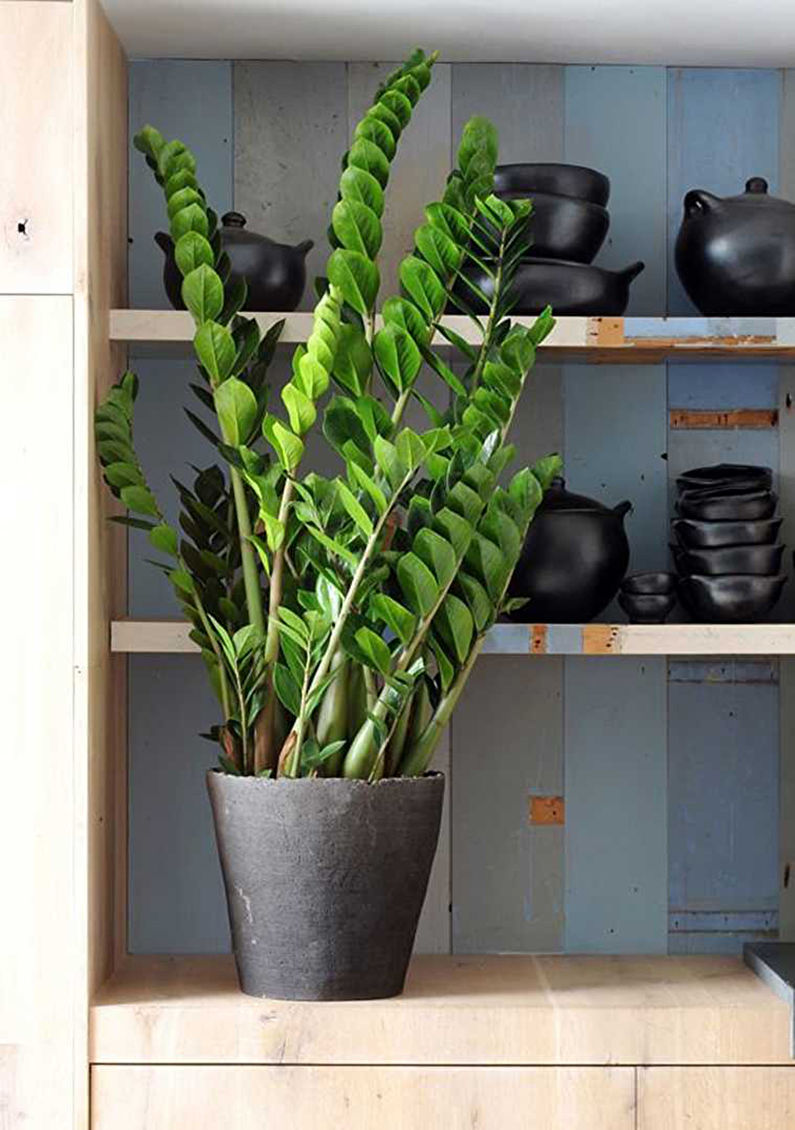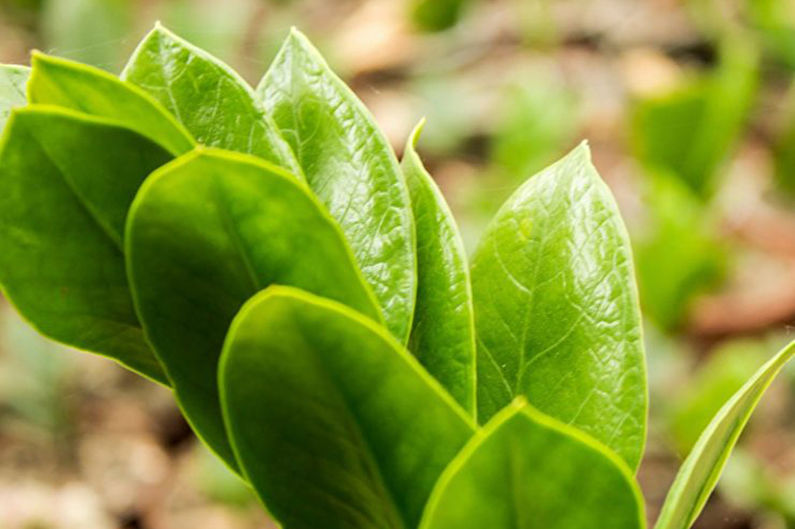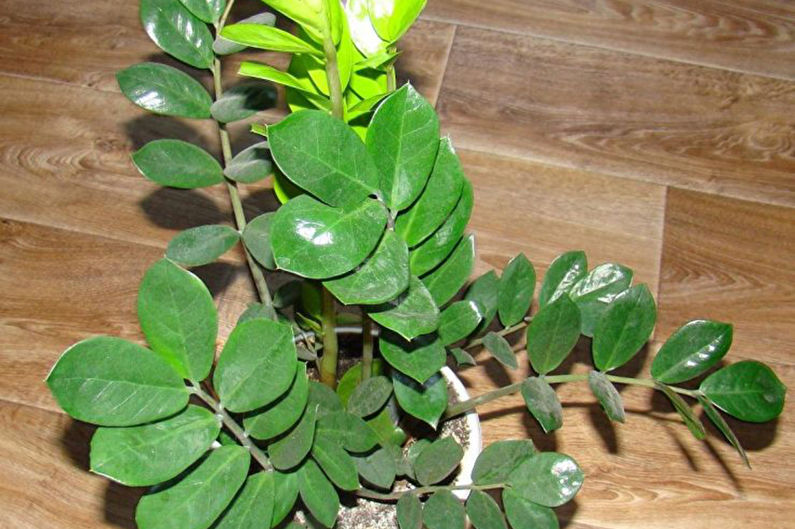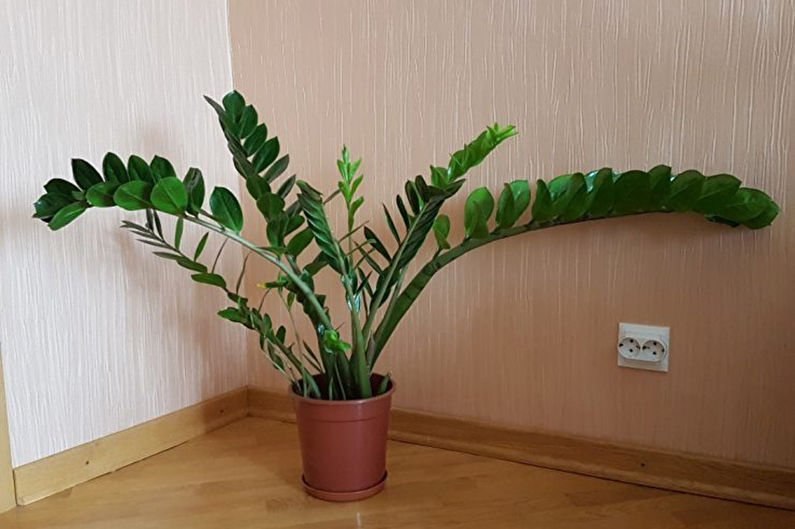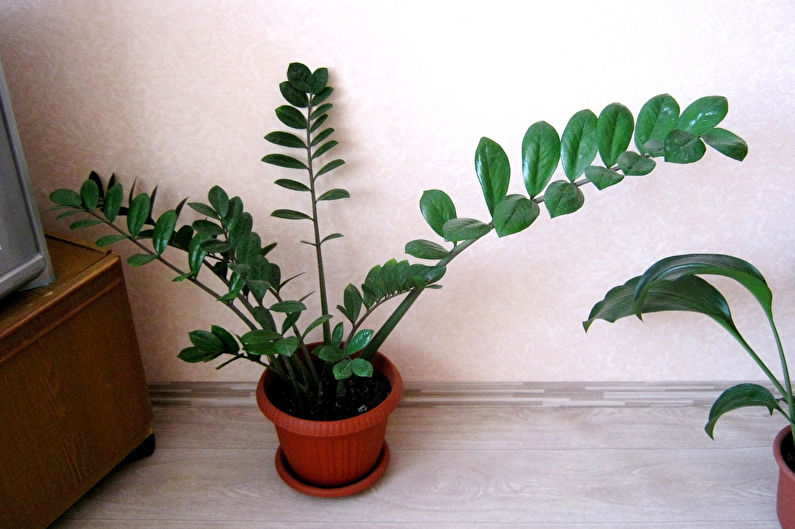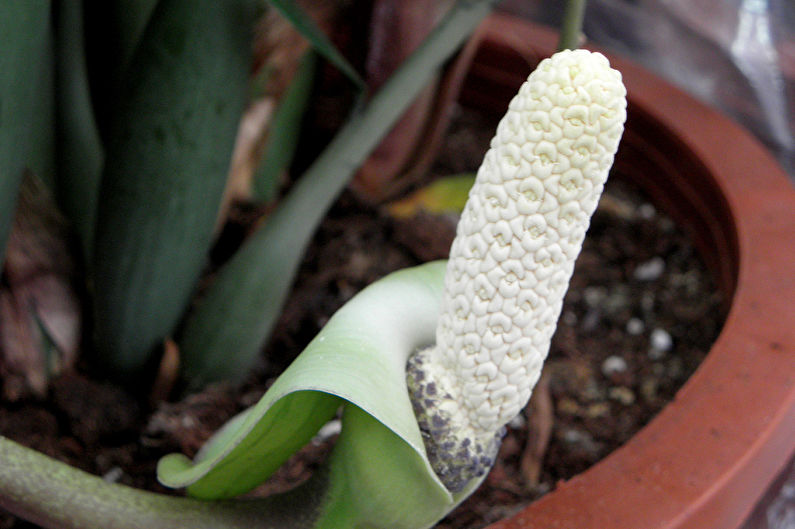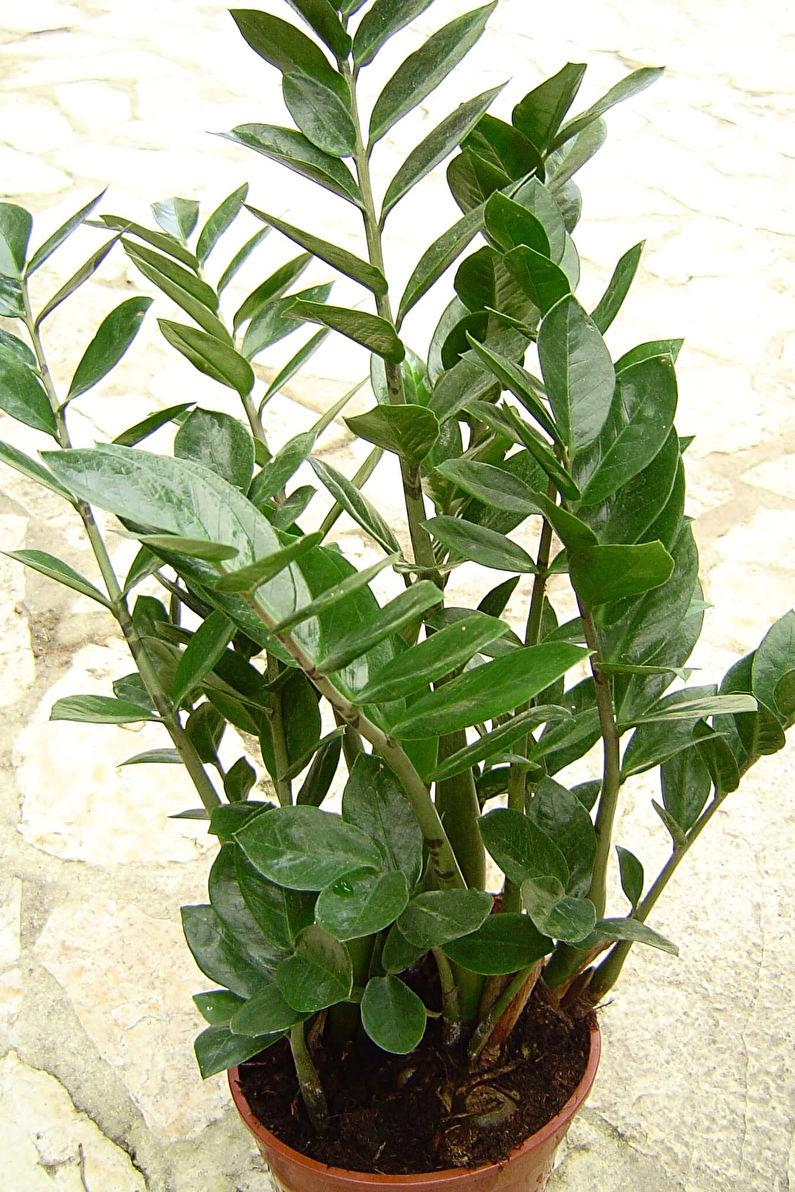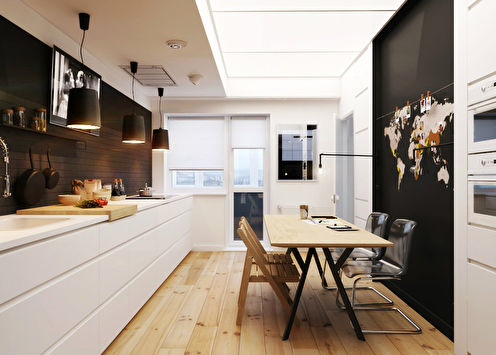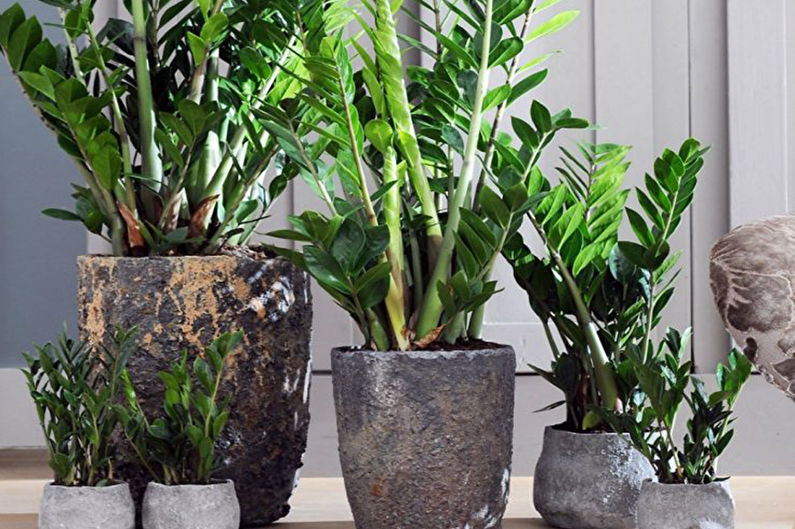
This exotic indoor flower with a difficult name in common people is called the "dollar tree". Compared with the "money tree" - Crassula - it has more massive stems and large leaves. Due to its attractive appearance and unpretentiousness to conditions, Zamiokulkas is widely used for landscaping offices, hotels, restaurants, private houses and apartments. Such a plant will be a good gift for a housewarming party, the anniversary of the company or any other holiday, acting as a kind of wish for prosperity and increasing profits.
general characteristics
Zamioculcas zamielistny (Zamioculcas zamiifolia) is an herbaceous plant of the Aronnikov family, which also includes calla lilies, spathiphyllum, philodendrons and some other greenhouse species. Zamioculcas can be recognized by the numerous complex-pinnate leaves of glossy green growing directly from the tuber. Near the base, they are thickened, which gives the flower stability even at a characteristic height of 80-100 cm. Flowering of zamioculcas occurs almost imperceptibly, accompanied by the appearance of a creamy yellow cob among the leaves, resembling an immature head of corn. Covers his only petal light green shade.
Zamioculcas was first described by researcher Conrad Lodges in 1828, but it was only cultivated as a room decor since 1996, when this tropical guest appeared at Dutch flower auctions. High decorativeness and “magical” properties of the dollar tree have contributed to the rapid spread of the flower around the world. In China, the plant is even called golden, and the followers of the Feng Shui teachings place it in the southeastern sector, decorate leaves with banknotes rolled up in a tube, and coins are buried in the ground. It is believed that such a ritual attracts monetary fortune to the house.
An important feature of Zamioculcas is that all its parts are poisonous. The ingress of juice from the leaves or the root causes a strong burning sensation on the skin, and even more so on the mucous membranes. This means that all manipulations must be carried out in protective gloves, without touching the face and eyes at this time, and the plant itself should be out of the reach of children and pets.
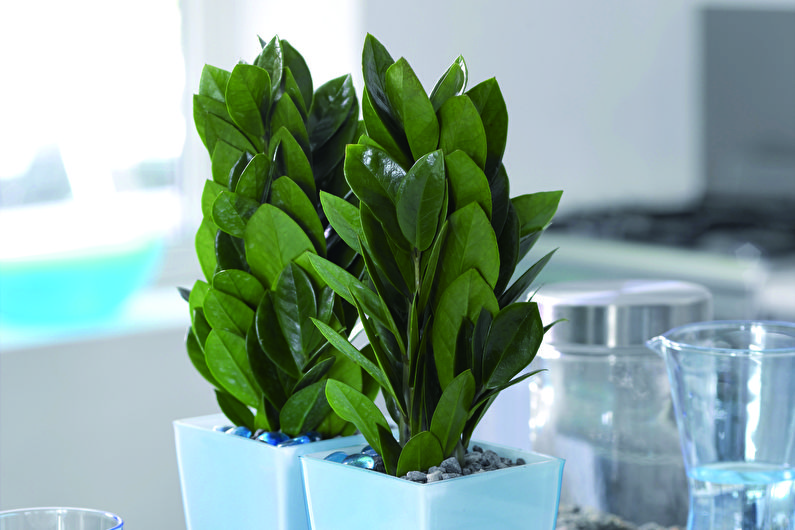

Caring for a dollar tree (Zamioculcus)
The natural habitat of Zamioculcas is Southeast Africa, a region in which the winter period of tropical showers gives way to summer drought. Adapting to such conditions, the plant accumulates a large amount of moisture in the tuber, due to which it can go without watering for more than 3-4 weeks. If the reserves are exhausted, the leaves gradually begin to dry, but the root remains viable for several months. Thus, the flower can be safely left unattended for a vacation or a long business trip, without fear that it will die.
Lighting
With dark green leaves, zamioculcas does not need bright sun. The best places for it are southeast and southwest window sills, balconies, areas near windows or glass doors. The lack of additional illumination does not affect the appearance of the plant. At the same time, it is desirable to provide free circulation of air around, if possible not over-dried.
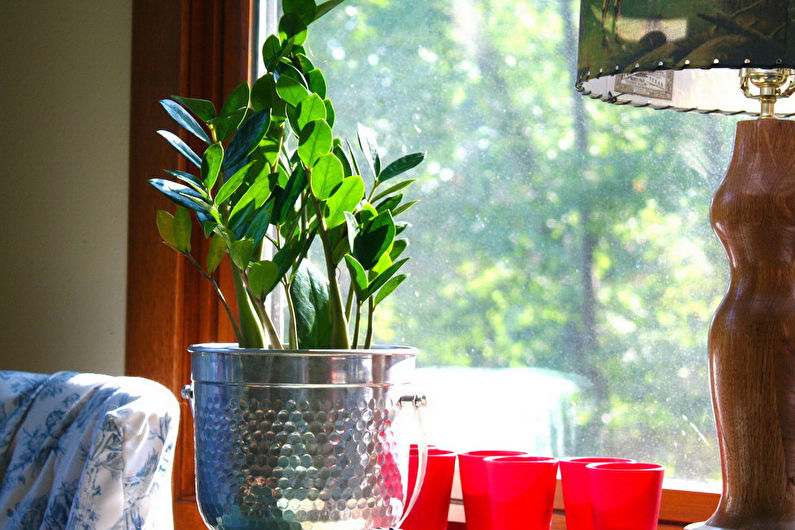
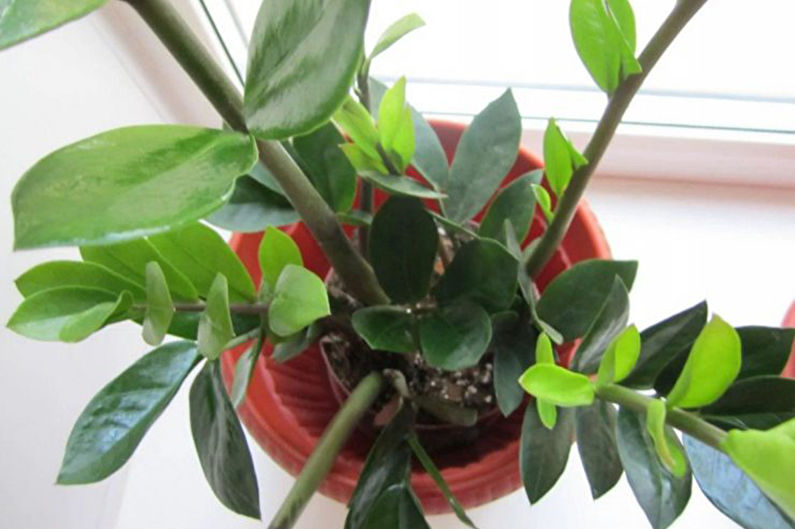
Watering
Like other succulents, a dollar tree does not require frequent soil moisture. The plant tolerates drying of the soil better than excess water, therefore, it needs good drainage and openings on the bottom of the pot to drain excess fluid. In the cold season, moist soil can lead to decay of the root system.During the heat, the leaves can be sprayed from the spray gun to slightly refresh the air.
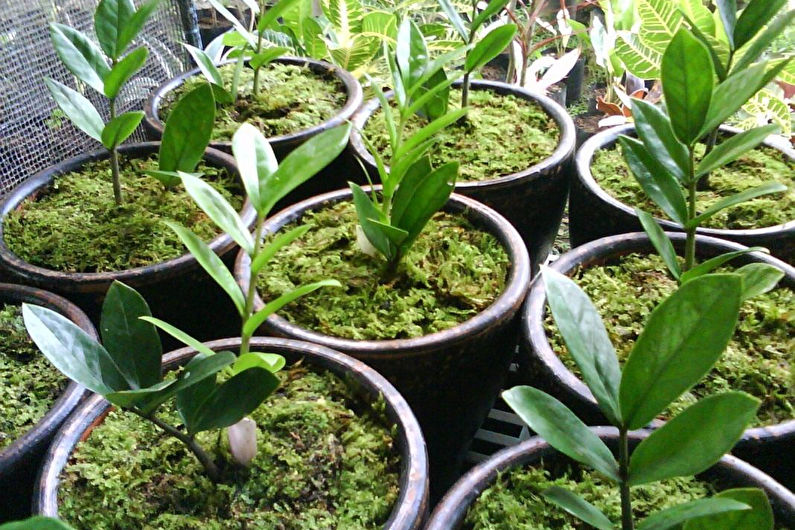
Temperature
The optimum temperature regime for growing Zamioculcas is up to + 25C in the summer and not lower than + 12C in the winter. In nature, the plant suffers extreme periods of drought, when the thermometer reaches the level of + 40C, but still it should not be left under the scorching sun. The presence of a flower in the frost, even for a short time, threatens the complete death of both leaves and tubers.

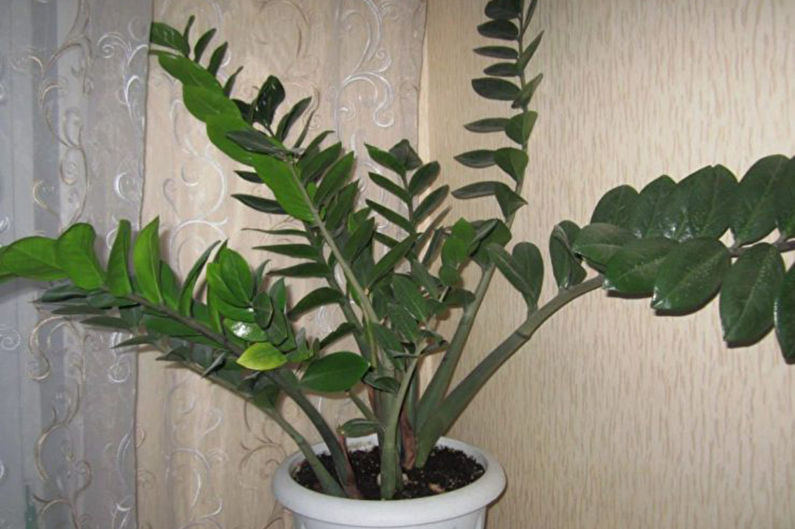
Fertilizers
The period of active growth of zamioculcas lasts from April to the end of August. To make the plant look healthier and lush, at this time it is recommended to moderately feed it by adding nutrients for succulents to the ground, according to the instructions for the chosen preparation (about once a month).
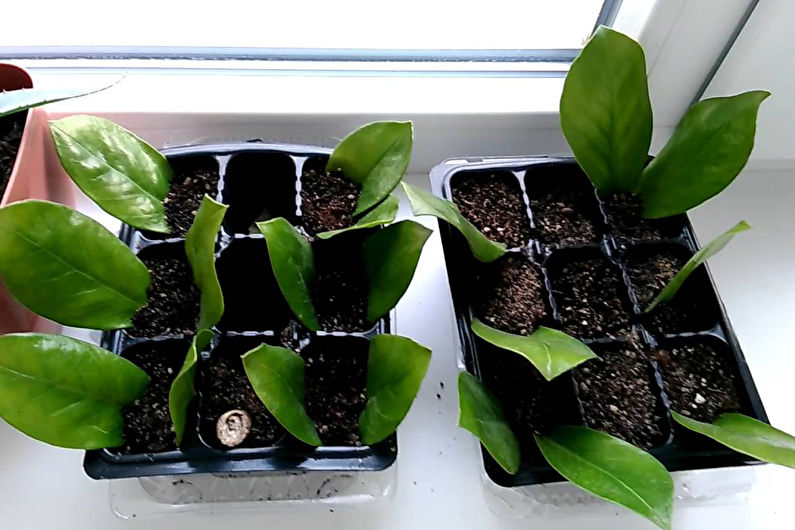
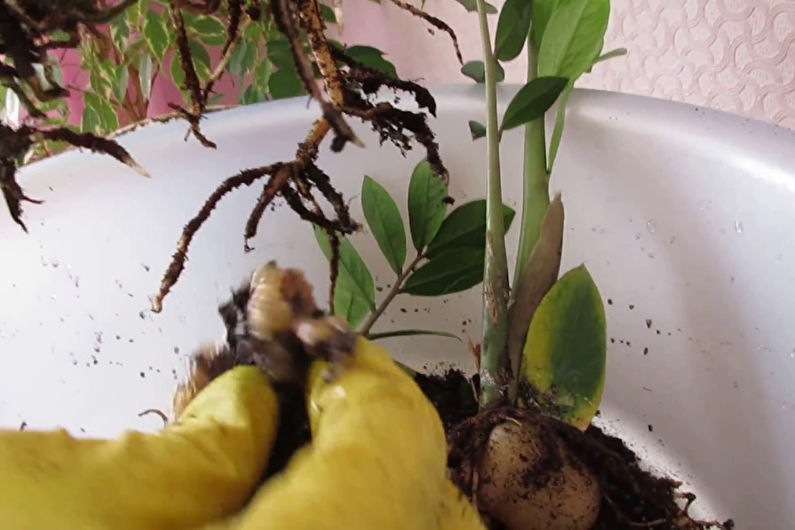
Transplantation and reproduction of Zamioculcus
In natural African conditions, zimoculcas acquired greater resistance to adverse conditions. With severe droughts, the terrestrial part of the plant often dies, but the root, which has accumulated nutrients and moisture, releases new sprouts with the onset of rains. Such endurance allows you to transplant a "dollar tree" without any restrictions or risks. Light soil is suitable for it, for example, a mixture of sheet, sod land (peat) and sand in equal proportions. As a drainage filler, you can use small gravel, pieces of shells, granite balls.
When choosing a container, one should be guided by the size of the tuber, but taking into account the fact that the root of zamioculcus increases rapidly. In adult plants of a meter height, its diameter can be 60 cm. The lifespan of such a "tree" lasts up to 10 years.
At home, zamioculcas propagates vegetatively. The easiest way is to divide the tuber with the stems when transplanting. To do this, the root is cut into several parts with a sharp knife (depending on the size), the cut points are slightly dried and processed with a growth stimulator, then they are planted in pots with prepared soil, compacted and lightly watered. This is best done in April, before the start of active growth.
Instead of a tuber, you can take a stem branch with a bud and deepen it into the soil only to the base of the lower pair of leaves. Further care is standard, but the earth must not be allowed to dry in the first months. Reproduction from the leaf is the longest process, since in this case it will take almost six months to wait for the formation of the tuber. To root the leaf, it is 1/3 deepened into the sandy-soddy soil, providing regular watering with warm water, ventilation and the greenhouse effect with a glass jar.
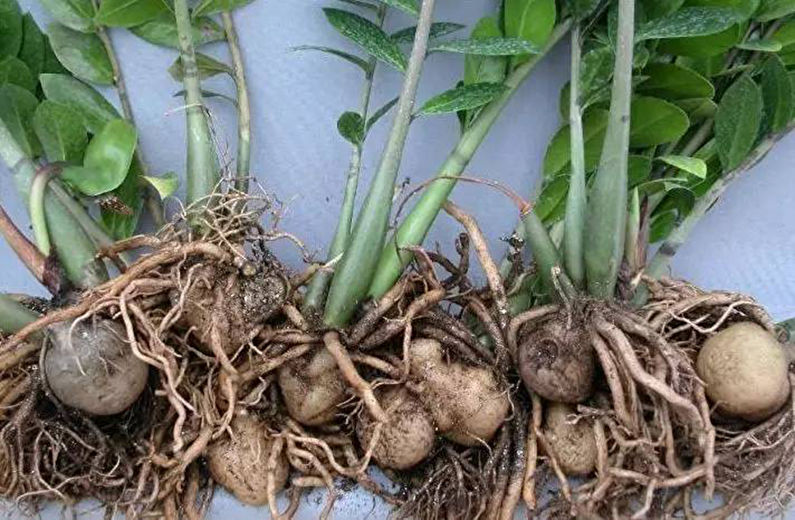
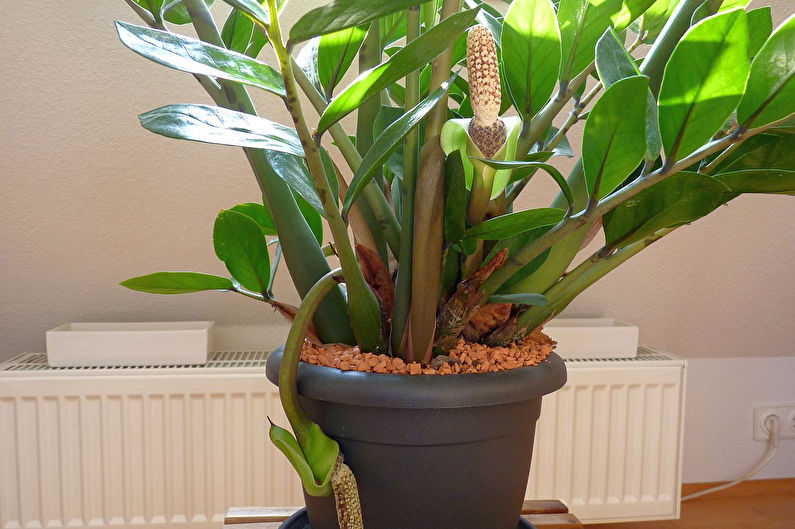
Pest and Disease Control
Despite its tropical origin, zamioculcas is almost not susceptible to diseases in mid-latitude indoor conditions. The only thing that can badly affect its condition is excessive soil moisture. It is easy to stop the rotting of the root and the base of the leaves - it is enough to transplant the plant into light dry soil, having previously cut, dried and treated with the potassium permanganate solution the affected areas of the tuber.
As for insects, they can appear when non-compliance with the rules of care, or migrate from neighboring infected flowers. Usually this is the well-known scale insects, aphids and spider mites. Pests can be destroyed with the help of a warm shower with a soapy solution. During water procedures, the earth must be covered with polyethylene, or treatment should be carried out together with the root, pulling it out of the soil. A more reliable result is given by spraying the leaves with special insecticides, but a similar procedure should be carried out in fresh air, and after a day, the remains of the drug will also need to be washed off in the shower.
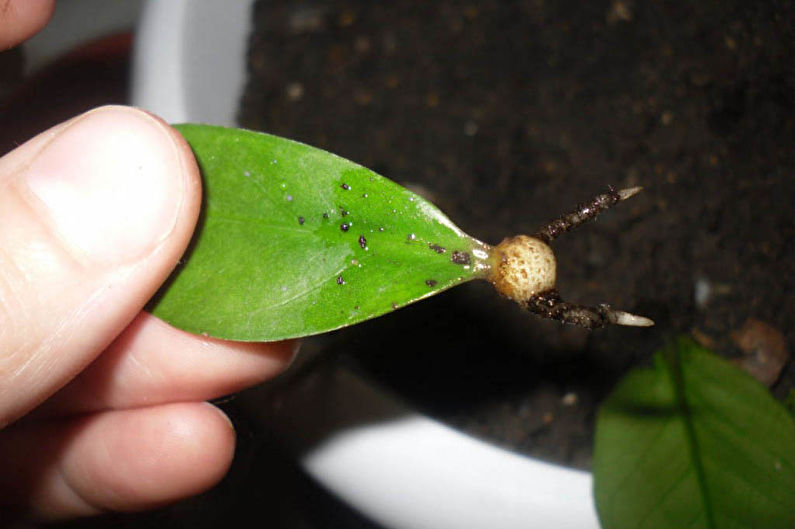
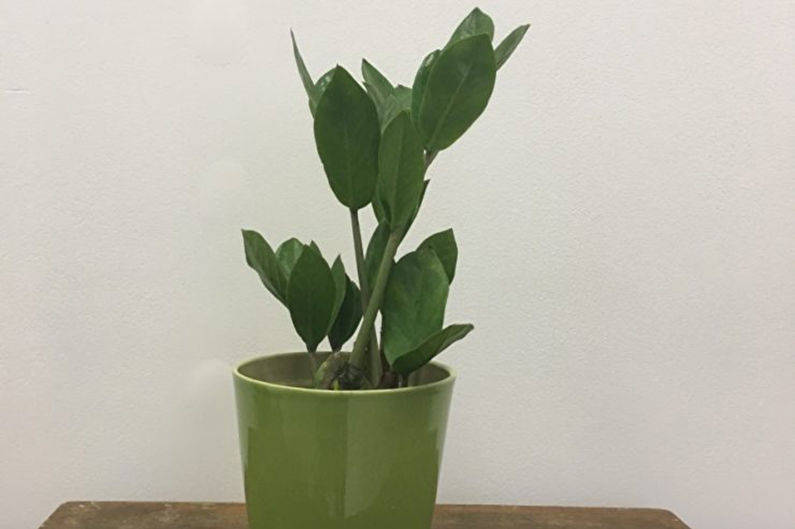

Zamioculcas - photo
If you want to know better how zamioculcas looks like, we suggest you look at a selection of photos on this page.This will help to better navigate when choosing this indoor plant in a flower shop or online catalog, and will also make it possible to decide whether to use it in the design of a room.
